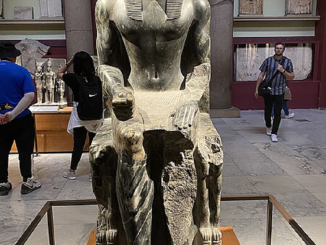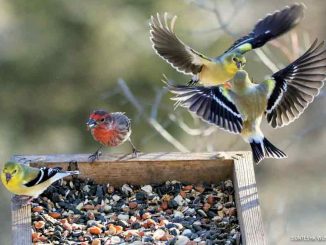Nestled within the hallowed halls of the British Museum lies a relic that whispers secrets from the depths of time – the Bastet cat statue. Crafted from bronze, silver, and gold, this exquisite artifact hails from Saqara, Egypt, dating back to the Late Period (712 – 323 BC). As we embark on a journey through the annals of history, let us unravel the enigma surrounding this sacred feline and delve into the rich tapestry of ancient Egyptian culture.
The Ancient Egyptian Civilization: To understand the significance of the Bastet cat statue, we must first delve into the vibrant tapestry of ancient Egyptian civilization. Flourishing along the banks of the Nile River for thousands of years, ancient Egypt was a cradle of innovation, art, and spirituality. At the heart of Egyptian society lay a complex belief system intertwined with mythology, ritualistic practices, and divine reverence.
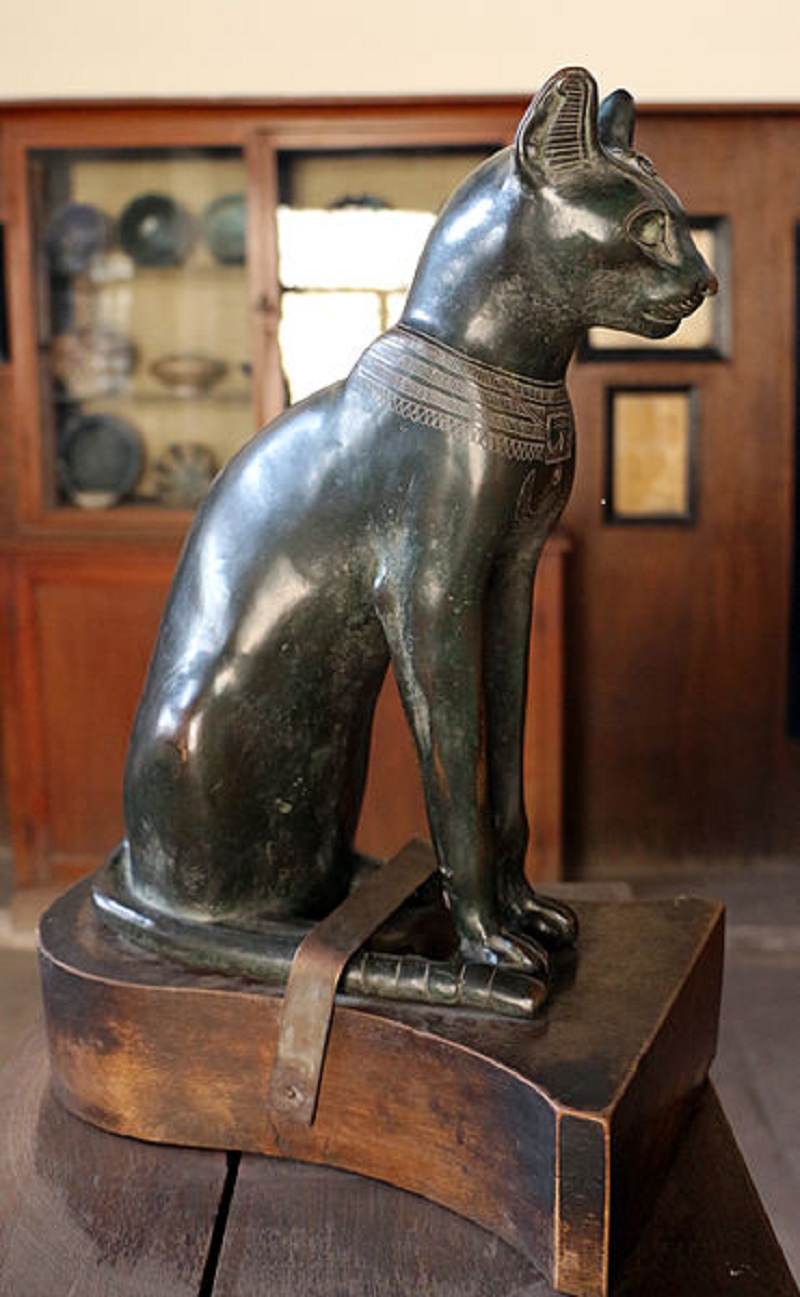
Central to Egyptian religious beliefs were the myriad gods and goddesses who governed various aspects of life, death, and the natural world. Among these deities stood Bastet, the goddess of home, fertility, and domesticity, often depicted with the head of a lioness or a domestic cat. Bastet held a revered position in Egyptian mythology, embodying both ferocity and nurturing qualities.
The Importance of Cats in Ancient Egypt: Cats held a special place in the heart of ancient Egyptians, revered for their grace, agility, and perceived connection to the divine. It is believed that domestic cats were first domesticated in ancient Egypt around 3100 BC, and they quickly became an integral part of Egyptian society. Cats were not only cherished companions but also revered as symbols of protection and guardianship.
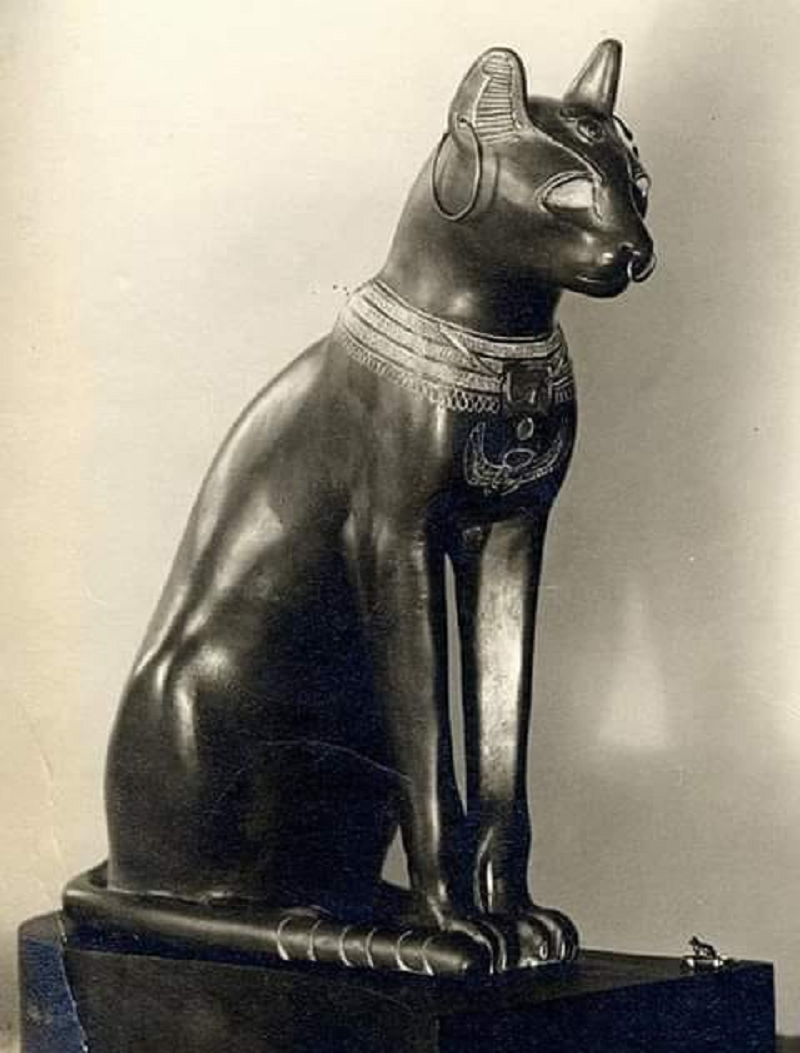
The veneration of cats reached its zenith during the New Kingdom (1550 – 1070 BC), a period marked by unprecedented prosperity and cultural flourishing. Cats were associated with various deities, with Bastet being the foremost among them. As the protector of home and hearth, Bastet was often depicted with feline attributes, symbolizing her close association with these revered animals.
The Role of Bastet in Egyptian Religion: Bastet played a multifaceted role in Egyptian religion, embodying both benevolent and wrathful aspects. As the goddess of home and fertility, she was believed to safeguard households, ensure bountiful harvests, and protect families from harm. However, Bastet also possessed a fierce and vengeful side, capable of unleashing destruction upon those who dared to threaten her devotees.
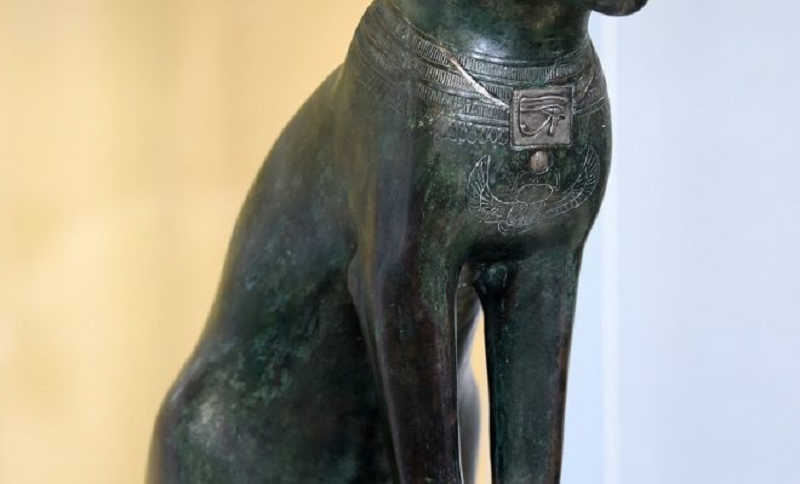
One of the most enduring symbols of Bastet’s protective nature was the cat amulet, a small figurine worn by both the living and the deceased as a talisman against evil spirits and malevolent forces. These amulets were often crafted from precious metals such as bronze, silver, and gold, imbuing them with spiritual significance and symbolic power.
The Bastet Cat Statue
A Symbol of Divine Protection: The Bastet cat statue stands as a testament to the reverence bestowed upon felines in ancient Egypt. Crafted with meticulous attention to detail, the statue captures the grace and majesty of the goddess Bastet in her feline form. Standing upright with its tail curled elegantly around its body, the statue exudes an aura of power and authority.

Made from a combination of bronze, silver, and gold, the Bastet cat statue exemplifies the skill and artistry of ancient Egyptian artisans. Each material held symbolic significance in Egyptian culture, with bronze representing strength and durability, silver symbolizing purity and divinity, and gold signifying immortality and divine favor. By combining these precious metals, the artisans created a masterpiece that transcended the boundaries of time and space.
The Bastet cat statue served a dual purpose in ancient Egyptian society. On one hand, it served as a religious icon, symbolizing the protective and nurturing aspects of the goddess Bastet. Many households adorned their homes with statues of Bastet in the hope of receiving her blessings and safeguarding their loved ones from harm. On the other hand, the statue also functioned as a symbol of wealth and status, with its intricate design and precious materials showcasing the affluence and sophistication of its owner.

The Legacy of the Bastet Cat Statue
Today, the Bastet cat statue stands as a poignant reminder of the enduring legacy of ancient Egypt and its sacred feline companions. As we gaze upon its gleaming form in the galleries of the British Museum, we are transported back in time to an era steeped in myth and mystery. Through the lens of archaeology, we gain a deeper understanding of the spiritual and cultural significance attached to these revered animals and their associated deities.
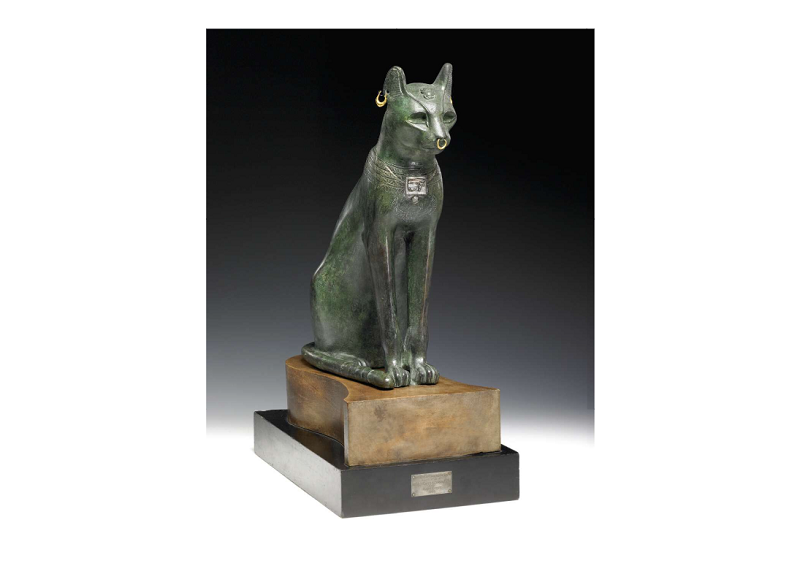
In conclusion, the Bastet cat statue serves as a bridge between the past and the present, connecting us to the ancient Egyptians who revered cats asdivine beings. By unraveling the mysteries surrounding this sacred artifact, we gain valuable insights into the beliefs, practices, and artistic achievements of one of the world’s most enigmatic civilizations. As we continue to explore the wonders of ancient Egypt, let us never forget the profound bond between humanity and its feline companions, immortalised for eternity in bronze, silver, and gold.

